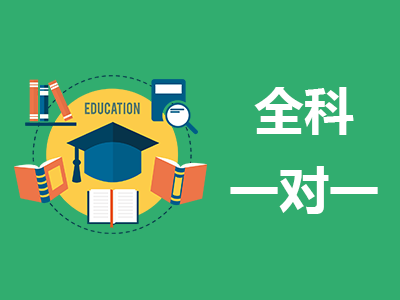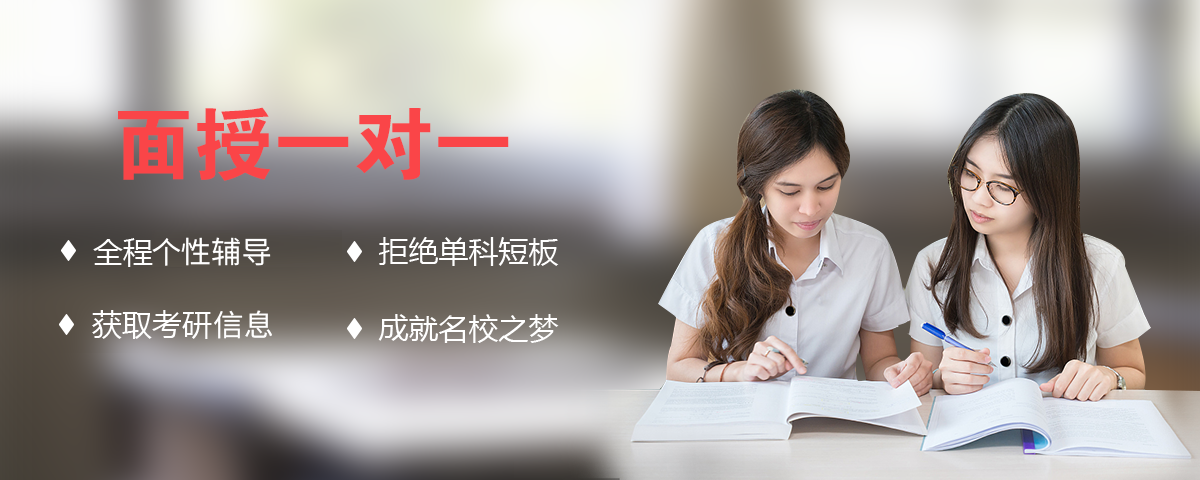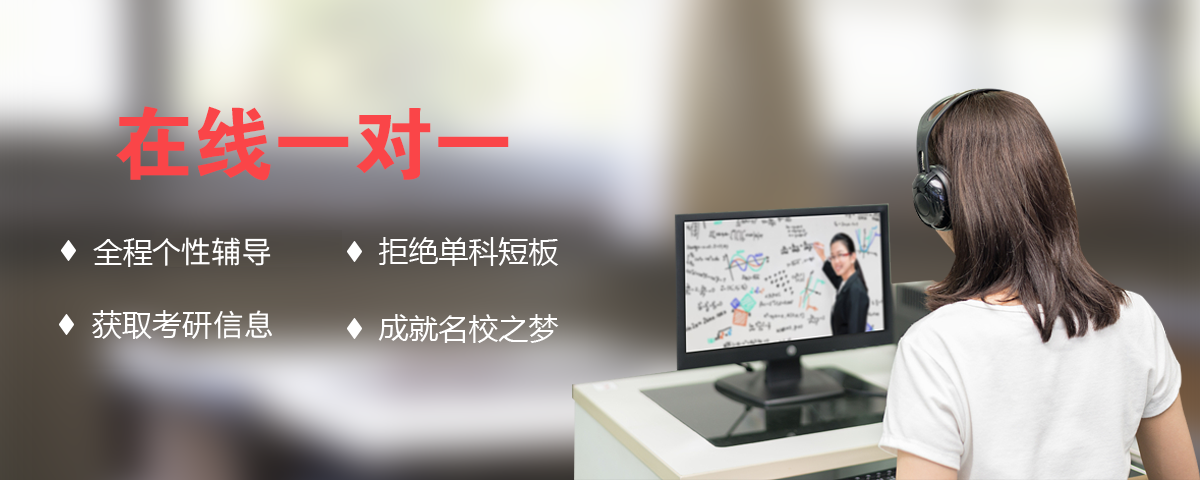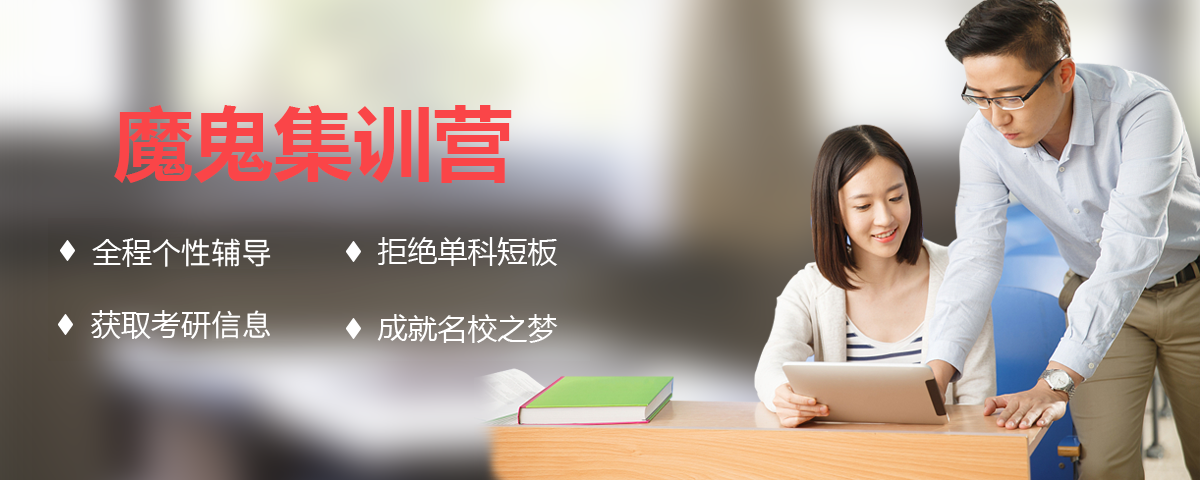
1.考生必须严格遵守各项考场规则。
(1)考生在考试开考15分钟后不得入场。
(2)交卷出场时间不得早于考试结束前30分钟。
(3)交卷结束后,不得再进考场续考,也不得在考场附近逗留或交谈。
2.答题前,应按准考证上的有关内容填写答题卡上的“考生姓名”“报考单位”“考生编号”等信息。
3.答案必须按要求填涂或写在指定的答题卡上。
(1)填涂部分应该按照答题卡上的要求用2B铅笔完成。如要改动,必须用橡皮擦干净。
(2)书写部分必须用(蓝)黑色字迹钢笔、圆珠笔或签字笔在答题卡上作答。字迹要清楚。
4.考试结束后,将答题卡装入原试卷袋中,试卷交给监考人员。
|
题 型 |
英 语 知 识 运 用 |
阅 读 理 解 |
写 作 |
总 计 |
|||
|
Part A |
Part B |
Part C |
Part A |
Part B |
|||
|
分 值 |
10 分 |
40 分 |
10分 |
10 分 |
10分 |
20 分 |
100 分 |
|
得 分 |
|
|
|
|
|
|
|
2016 年全国硕士研究生招生考试英语(一)
终极预测试卷 1
Section Ⅰ Use of English
Directions:
Read the following text. Choose the best word(s) for each numbered blank and mark A, B, C or D on the ANSWER SHEET. (10 points)
In their quest to build profitable and more far-reaching digital audiences, publishers in the US and Europe have turned to the world’s largest 1 network for help. Nine media organisations, 2 the BBC through its youth-oriented Newsbeat service, the Guardian and the New York Times, have 3 a deal with Facebook to publish some of their 4 directly through the social network rather than 5 hosting it on their own sites as part of a trial.
The 6 comes as increasing numbers of readers rely on the social network as the main site 7 which they receive news. Facebook wants not only to 8 users to news sites 9 to be the place where they stay and consume it, too. Facebook already 10 nearly 20 per cent of the Guardian’s web traffic, excluding visits to its own apps, and about 15 per cent of 11 to the New York Times site.
The Facebook deal follows complaints by some 12 that internet groups such as Google and Facebook 13 their own online businesses. Rupert Murdoch’s News Corp, 14 , a critic of Google and Facebook, is not participating. Others have 15 concern that Facebook would have too much power 16 which stories appear and where they are placed.
Facebook said the 17 would give publishers “control over their stories, brand experience and profit opportunities”, including 18 to some user data. Online sharing of news articles has already 19 some readers away from publishers’ 20 pages towards social media sites.
1. [A] television [B] social [C] data [D] shopping
2. [A] including [B] involving [C] revolving [D] referring
3. [A] played [B] found [C] struck [D] drawn
4. [A] content [B] quality [C] theories [D] drawn
5. [A]irregularly [B] persistently [C] simply [D] primarily
6. [A] system [B] move [C] mechanism [D] merger
7. [A] by [B] as [C] through [D] towards
8. [A] turn [B] find [C] figure [D] point
9. [A] but [B] thus [C] even [D] then
10. [A] prepares for [B] accounts for [C] piles on [D] brings about
11. [A] traffic [B] space [C] revenue [D] staff
12. [A] companies [B] groups [C] publishers [D] associations
13. [A] underestimate [B] undermine [C] increase [D] strengthen
14. [A] above all [B] on average [C] in principle [D] for example
15. [A] confirmed [B] expressed [C] cultivated [D] offered
16. [A] over [B] with [C] of [D] for
17. [A] article [B] game [C] scheme [D] agenda
18. [A] approach [B] access [C] mode [D] manner
19. [A] prevented [B] kept [C] made [D] lured
20. [A] introductory [B] home [C] yellow [D] technological
Section Ⅱ Reading Comprehension
Part A
Directions:
Read the following four texts. Answer the questions below each text by choosing A, B, C or D. Mark your answers on the ANSWER SHEET. (40 points)
Text 1
There were some consistent patterns among the heavier readers: For the younger children— ages 6 to 11—being read aloud to regularly and having restricted online time were correlated with frequent reading; for the older children—ages 12 to 17—one of the largest predictors was whether they had time to read on their own during the school day.
The finding about reading aloud to children long after toddlerhood may come as a surprise to some parents who read books to children at bedtime when they were very young but then tapered off. Last summer, the American Academy of Pediatrics announced a new policy recommending that all parents read to their children from birth.
“A lot of parents assume that once kids begin to read independently, that now that is the best thing for them to do,” said Maggie McGuire, the vice president for a website for parents operated by Scholastic. But reading aloud through elementary school seemed to be connected to a love of reading generally. According to the report, 41 percent of frequent readers ages 6 to 10 were read aloud to at home, while only 13 percent of infrequent readers were being read to.
Of course, children who love to read are generally immersed in households with lots of books and parents who like to read. So while parents who read to their children later in elementary school may encourage those children to become frequent readers on their own, such behavior can also result from “a whole constellation of other things that goes on in those families,” said Timothy Shanahan, a past president of the International Reading Association.
There is not yet strong research that connects reading aloud at older ages to improved reading
comprehension. But some literacy experts said that when parents or teachers read aloud to children even after they can read themselves, the children can hear more complex words or stories than they might tackle themselves.
“It’s this idea of marinating children in higher-level vocabulary,” said Pam Allyn, founder of LitWorld.Org, a nonprofit group that works to increase literacy among young people. “The read-aloud can really lift the child.” Other literacy experts say the real value of reading to children is helping to develop background knowledge in all kinds of topics as well as exposure to sophisticated
language.
21. It can be inferred from the first paragraph that _______.
[A] the younger children and the older children have the same reading patterns
[B] for the younger children, being read aloud regularly is good to their school days
[C] for the older children, having time to read independently is very important
[D] for the older children, having restricted online time is good to develop reading habits
22. The phrase “tapered off” (Para. 2) probably means_______.
[A] stopped halfway
[B] declined gradually
[C] turned off
[D] read occasionally
23. The author mentions “ the report” in Paragraph 3 to show that _______.
[A] reading aloud through elementary school is related to children’s reading habits
[B] Maggie McGuire’s viewpoint is wrong
[C] many parents think that children read independently is the best thing
[D] there is little difference between frequent readers and infrequent readers
24. Which of the following is NOT true according to Paragraphs 4-5?
[A] Children who like to read are usually influenced by parents.
[B] The family atmosphere is crucial to children’s reading behavior.
[C] No obvious evidence proves reading aloud at older ages can strengthen reading comprehension.
[D] Some literacy experts believe there is no significance to read aloud for older children.
25. Pam Allyn argues that the advantage of read-aloud is that _______.
[A] it can enlarge children’s vocabulary
[B] it can really improve children’s reading ability
[C] it’s helpful to enrich children’s knowledge
[D] it’s beneficial for children to understand sophisticated language
Text 2
Women have been driving yellow cabs in New York since the 1940s, but 99% of drivers are male. Even among drivers of cars booked by phone or online, only 4% are women. That may change with the launch of SheTaxis, an app that lets female passengers insist on female drivers, and vice versa.
It will be available in New York City, Westchester and Long Island, and the firm plans to
expand to other cities. Stella Mateo, the founder, is betting that quite a few women are nervous and weary of getting into cars driven by men. The service may also appeal to those whose religious beliefs forbid them to travel with unrelated men. Each driver wears a pink pashmina. Men who ask for a ride will be directed to another car service.
Similar services thrive in India, South Africa and several Middle Eastern cities. Japan has had women-only railway carriages on and off since 1912. Known as hana densha (flower trains), they offer shelter from the gropers who make rush hour in Tokyo so disagreeable.
But SheTaxis faces two speed bumps. One is practical. Demand has been so great that the firm has had to decelerate its launch until it can recruit 500 drivers. The other obstacle is legal. By employing only female drivers, SheTaxis is obviously discriminating against men. Since anti-discrimination law is not always applied with common sense, that may be illegal. And there is no shortage of potential litigants. Yellow cabbies are furious at the growth of online taxi firms such as Uber. “It’s not hard to imagine a guy ... filing suit,” says Sylvia Law of New York University Law School. “SheTaxis’ defence would probably be that its drivers are all independent contractors.”
Because the firm caters only to women, it is discriminating against male customers, too. Is that legal? Angela Cornell of Cornell Law School thinks there could be a loophole. New York’s Human Rights Commission could make an exemption on the ground that SheTaxi offers a service that is in the public interest: women feel safer not getting into cars with strange men. Women-only colleges are allowed, so why not women-only cabs? The snag is that some men may also feel safer getting into cabs with female drivers. A study in 2010 found that 80% of crashes in New York City that kill
or seriously injure pedestrians involve male drivers. Women drivers are simply better.
26. We can learn from the first paragraph that SheTaxis _______.
[A] will increase women driving yellow cabs
[B] will change the market of booking taxis online
[C] allows female drivers to only choose female passengers
[D] lets male passengers insist on male drivers
27. It can be inferred that the service of SheTaxis may appeal to_______.
[A] women who are nervous about taxi drivers
[B] women with certain religious beliefs
[C] women who are tired of taking taxis
[D] men who ask for a ride
28. The word “gropers” (Para. 3) probably refers to_______.
[A] people who cause a traffic jam
[B] men who make sexual harassment to women
[C] men who cause the rush hour in Tokyo
[D] people who make taking trains disagreeable
29. If SheTaxis is accused of discriminating against men, it may_______.
[A] decelerate its launch as an online taxi firm
[B] employ both male and female drivers
[C] make anti-discrimination law not applicable
[D] spring to the defence of its drivers
30. SheTaxis may be exempt from illegality by New York ’s Human Rights Commission because_______.
[A] its service provided is based on the public interest
[B] it discriminates against male passengers
[C] it provides service also for male passengers
[D] it decreases crashes caused by male drivers
Text 3
Psychologists have known for a century that individuals vary in their cognitive ability. But are some groups, like some people, reliably smarter than others? In order to answer that question. we grouped 697 volunteer participants into teams of two to five members. Each team worked together to complete a series of short tasks, which were selected to represent the varied kinds of problems that groups are called upon to solve in the real world. One task involved logical analysis, another brainstorming; others emphasized coordination, planning and moral reasoning.
Individual intelligence, as psychologists measure it, is defined by its generality: People with good vocabularies, for instance, also tend to have good math skills, even though we often think of those abilities as distinct. The results of our studies showed that this same kind of general intelligence also exists for teams. On average, the groups that did well on one task did well on the others, too. In other words, some teams were simply smarter than others.
We found the smartest teams were distinguished by three characteristics. First, their members contributed more equally to the team’s discussions, rather than letting one or two people dominate the group. Second, their members scored higher on a test called Reading the Mind in the Eyes, which measures how well people can read complex emotional states from images of faces with only the eyes visible. Finally, teams with more women outperformed teams with more men. This last effect, however, was partly explained by the fact that women, on average, were better at “mindreading” than men.
In a new study, we replicated these earlier findings. We randomly assigned each of 68 teams to complete our collective intelligence test in one of two conditions. Half of the teams worked face to face. The other half worked online, with no ability to see any of their teammates. We wanted to see whether groups that worked online would still demonstrate collective intelligence, and whether social ability would matter as much when people communicated purely by typing messages into a browser.
And they did. Online and off, some teams consistently worked smarter than others. More surprisingly, the most important ingredients for a smart team remained constant regardless of its mode of interaction: members who communicated a lot, participated equally and possessed good emotion-reading skills.
31. It can be inferred from the first paragraph that________ .
[A] some groups are really smarter than others
[B] the 697 volunteer participants need to complete a series of short tasks together
[C] the selected short tasks must have practical significance
[D] logical analysis and brainstorming are important in each task
32. According to psychologists, individual intelligence________ .
[A] is characterized by generality [B] is related to math skills
[C] is not related to teams [D] is key to smarter teams
33. According to the author, the characteristics of smarter teams include all the following EX-
CEPT________ .
[A] The members have relatively equal contribution to the team’s discussions
[B] The members have a higher IQ
[C] The members have a stronger ability of reading complex facial expressions
[D] There are more female members than other teams
34. In a new study, the other half of people work online because________ .
[A] it’s necessary to ensure the accuracy of the experiment
[B] online collaboration is becoming more and more important
[C] the experimenters want to see whether collective intelligence will be showed
[D] the experimenters want to prove social ability is vital to every team
35. The best title for the passage may be________ .
[A] How to Develop a Smarter Team
[B] Why Some Teams Are Smarter Than Others
[C] The Characteristics of Smarter Team
[D] What Factors can Affect a Team
Text 4
Over the weekend, NASA’s newest Mars rover, the Curiosity, which landed early on Aug. 6 after an eight-month flight, started sending back a 360-degree high-resolution panorama of its surroundings.
At a news conference on Wednesday, John P. Grotzinger, a professor of geology at the Califor- nia Institute of Technology who serves as the mission’s project scientist, compared the view with a place just a few hours’ drive from Pasadena, Calif, and NASA’s Jet Propulsion Laboratory, the rover’s birthplace. “You would really be forgiven for thinking that NASA was trying to pull a fast one on you,” he said, “and we actually put a rover out in the Mojave Desert and took a picture—a little L.A.(Los Angeles) smog coming in there.” He added, “To a certain extent, the first impression you get is how Earth-like it seems.”
Where the Curiosity actually sits is a 96-mile-wide crater named Gale near the Martian equator. To the north, the images show part of the crater rim that is believed to have been eroded by flowing water. To the south is a 3.4-mile-high peak that the scientists call Mount Sharp, which Curiosity is meant to reach and to climb. By investigating the layers of sedimentary rock on Mount Sharp, mis-
sion scientists hope to reconstruct the climate and environment of early Mars and tell whether it could have been once been habitable for life.
The photos also show marks that Curiosity has made at the landing site. As Curiosity was lowered to the surface of Mars, blasts from the descent-stage engines created indentations in the nearby soil, exposing the bedrock below. This exposed bedrock is likely to be one of the first areas of scientific exploration on the rover’s planned two-year journey.
After the flawless landing, the first week of operations of the rover on the ground also proceeded almost perfectly, too, as engineers started checking out the rover’s system, deployed the high-gain antenna, and raised the mast that holds the cameras.
So far, no significant trouble has arisen. The weather instrument experienced a problem that engineers figured out a day later. The rover’s internal temperatures are slightly warmer than expected, possibly because the crater is warmer than predicted or because NASA’s computer models of Curiosity were not quite right. Worries about overheating could put constraints on when certain instruments can be used. But the heat is also a boon, reducing the energy Curiosity needs to
warm up its joints and wheels before moving.
36. The phrase “pull a fast” (Para. 2) most probably means ________.
[A] hasten [B] conceal [C] deceive [D] beautify
37. Where is the rover Curiosity’s real location?
[A] In the middle Mojave Desert near its birthplace in the US.
[B] To the south of crater Gale that is near the Martian equator.
[C] Near the Martian equator which is eroded by flowing water.
[D] On top of a 3.4-mile-high peak which used to be habitable.
38. It can be inferred from the passage that the rover’s investigation________ .
[A] is likely to start with the study of the rocks on Mars
[B] is determined on the reconstruction of the climate on Mars
[C] started immediately after the rover’s perfect landing
[D] can only begin after a week’s preparation on the ground
39. What caused the rover’s unexpected warmer internal temperature?
[A] A minor problem of the weather instrument.
[B] Problems of NASA’s computer models of Curiosity.
[C] The impact on the rover during landing.
[D] Overheating of certain instrument in the rover.
40. What is the main idea of the passage?
[A] How earthlike the surface of Mars is. [B] The success landing of Curiosity.
[C] NASA’s achievement in investigating Mars. [D] How far the mission of Curiosity has gone. Part B
Directions:
The following paragraphs are given in a wrong order. For Questions 41-45, you are required to reorganize these paragraphs into a coherent text by choosing from the list A-G and filling them into the numbered boxes. Paragraphs C and G have been correctly placed. Mark your answers on the ANSWER SHEET. (10 points)
[A] All in all, the numbers suggest that aging is simply different in the active.
[B] As it turned out, the cyclists did not show their age. On almost all measures, their physical functioning remained fairly stable across the decades and was much closer to that of young adults than of people their age. As a group, even the oldest cyclists had younger people's levels of balance, reflexes, metabolic health and memory ability.
[C] Active older people resemble much younger people physiologically, according to a new study of the effects of exercise on aging. The findings suggest that many of our expectations about the inevitability of physical decline with advancing years may be incorrect and that how we age is, to a large degree, up to us. Aging remains a surprisingly mysterious process. A wealth of past scientific research has shown that many bodily and cellular processes change in undesirable ways as we grow older. But science has not been able to establish definitively whether such changes result primarily from the passage of time or result at least in part from lifestyle.
[D] This conundrum is particularly true in terms of inactivity. Older people tend to be quite sedentary nowadays, and being sedentary affects health, making it difficult to separate the effects of not moving from those of getting older. In the new study, which was published this week in The Journal of Physiology, scientists at King's College London and the University of Birmingham in England decided to use a different approach. They removed inactivity as a factor in their study of aging by looking at the health of older people who move quite a bit.
[E] The scientists then ran each volunteer through a large array of physical and cognitive tests. The scientists determined each cyclist's endurance capacity, muscular mass and strength, pedaling power, metabolic health, balance, memory function, bone density and reflexes. The researchers compared the results of cyclists in the study against each other and also against standard benchmarks of supposedly normal aging. If a particular test's numbers were similar among the cyclists of all ages, the researchers considered, then that measure would seem to be more dependent on activity than on age.
[F] To accomplish that goal, the scientists recruited 85 men and 41 women aged between 55 and 79 who bicycle regularly. The volunteers were all serious recreational riders but not competitive athletes. The men had to be able to ride at least 62 miles in six and a half hours and the women 37 miles in five and a half hours, benchmarks typical of a high degree of fitness in older people.
[G] Some aspects of aging did, however, prove to be ineluctable. The oldest cyclists had less muscular power and mass than those in their 50s and early 60s and considerably lower overall aerobic capacities. Age does seem to reduce our endurance and strength to some extent, Dr.Harridge said, even if we exercise. But even so, both of those measures were higher among the oldest cyclists than would be considered average among people aged 70 or above.
| C | 41. | 42. | 43. | 44. | G | 45. | |||||||||||



























